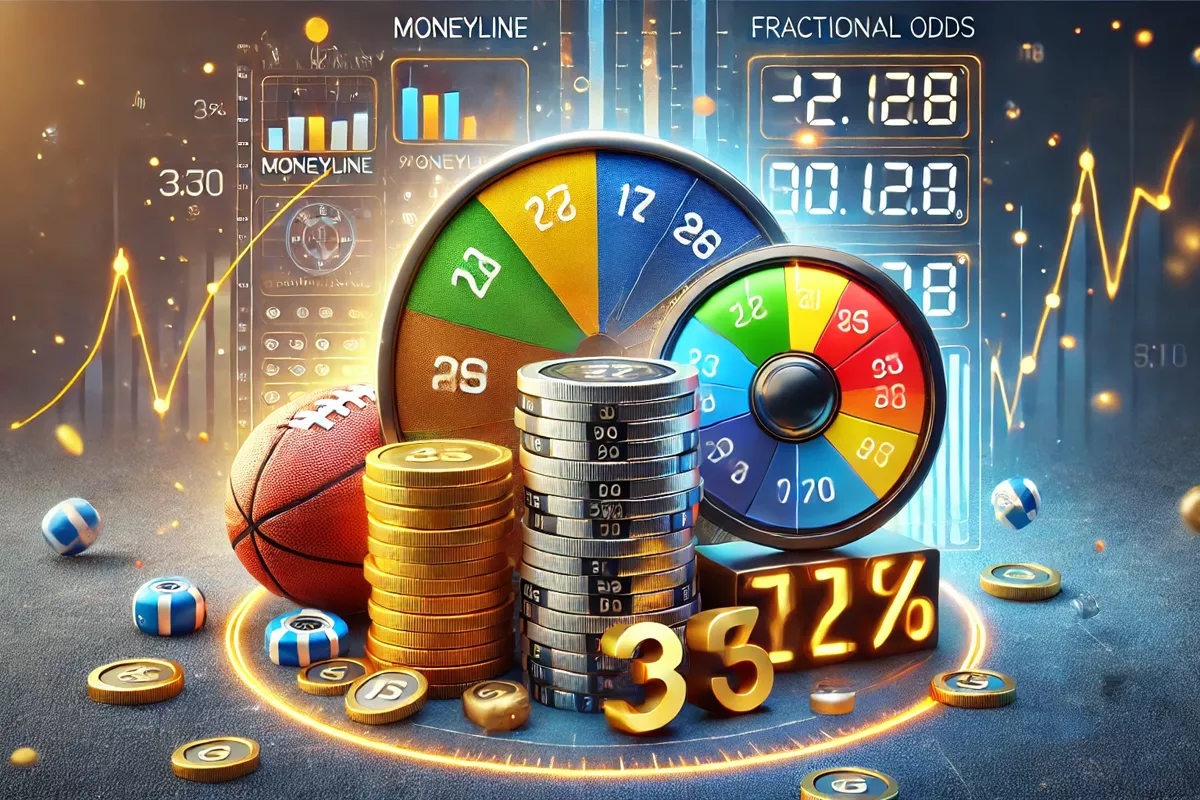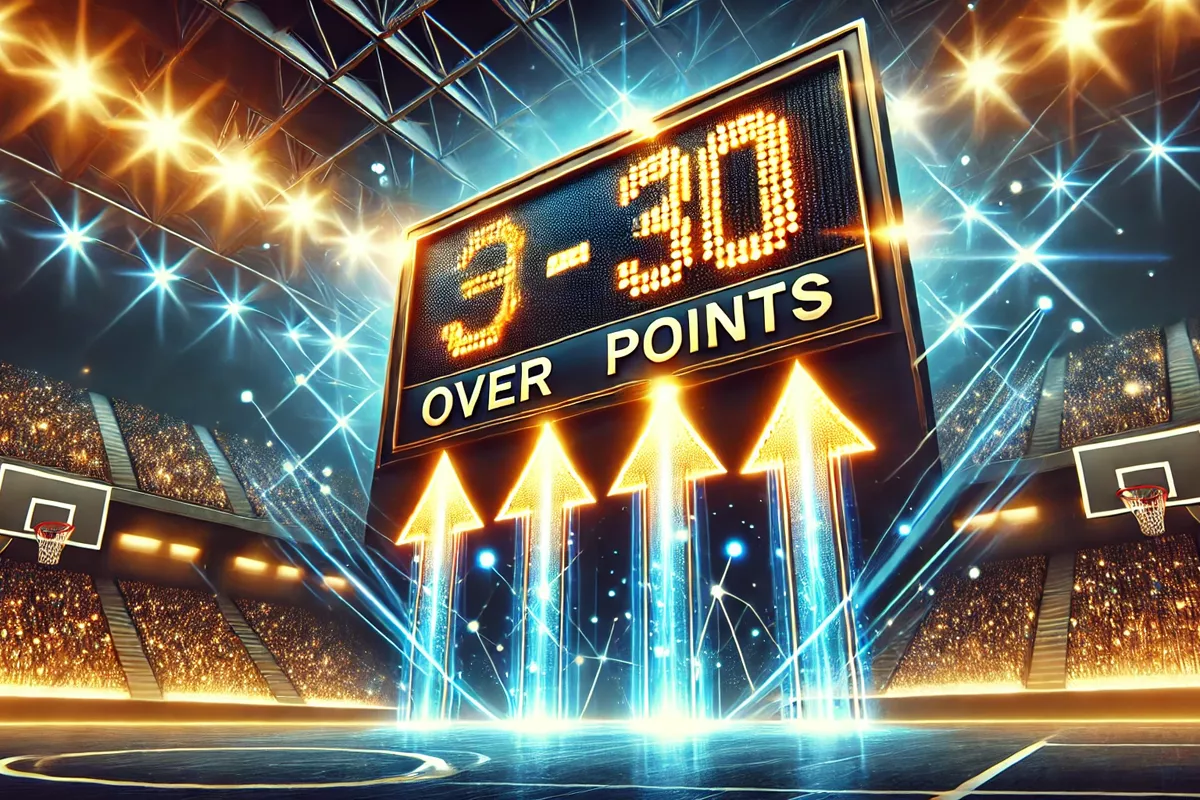If you’re betting on sports in the U.S., you need to understand American odds. These are also called moneyline odds, and they show the potential profit on a $100 bet. Here’s how they work and how you can use them.
Table of Contents
ToggleWhat Are American Odds?
American odds are either positive or negative.
- Positive odds: Show how much profit you make on a $100 bet.
- Example: +150 odds means you win $150 on a $100 bet.
- Negative odds: Show how much you need to bet to win $100.
- Example: -150 odds means you need to bet $150 to win $100.
How to Calculate American Odds
Calculating these odds is simple.
Positive American Odds (+)
- Multiply your bet by the odds.
- Divide by 100.
Example: Betting $50 on +200 odds.
- $50 x 200 = $10,000
- $10,000 / 100 = $100 profit
Negative American Odds (-)
- Multiply your bet by 100.
- Divide by the odds.
Example: Betting $75 on -150 odds.
- $75 x 100 = $7,500
- $7,500 / 150 = $50 profit
These calculations quickly show potential returns.
Converting American Odds to Other Formats
American odds are common in the U.S., but you might see decimal and fractional odds elsewhere. Here’s how to convert them.
American Odds to Decimal Odds:
- Positive Odds: Divide by 100, then add 1.
- Example: +150 odds: 150 / 100 + 1 = 2.50
- Negative Odds: Divide 100 by the absolute value, then add 1.
- Example: -150 odds: 100 / 150 + 1 = 1.67
Converting American Odds to Implied Probability
Implied probability shows the chance of an event happening based on the odds.
Positive American Odds (+)
- Divide 100 by the sum of the odds and 100.
- Example: +200 odds: 100 / (200 + 100) = 33.3%
Negative American Odds (-)
- Divide the absolute value by the sum of the absolute value and 100.
- Example: -150 odds: 150 / (150 + 100) = 60%
Knowing implied probability helps you compare your estimates with the bookmaker’s odds.
Tools for Converting Odds
Online tools can help you convert between American, decimal, and fractional odds, and calculate implied probabilities.
- AceOdds Bet Calculator: Converts different types of odds and calculates potential winnings.
- Covers Odds Converter: Converts American odds to decimal and fractional formats and provides implied probabilities.
American Odds to Decimal Formula and Examples
Quick conversion formulas:
Positive American Odds (+)
- Formula: (American Odds / 100) + 1
- Example: +250 odds: 250 / 100 + 1 = 3.50
Negative American Odds (-)
- Formula: 1 + (100 / absolute value of American Odds)
- Example: -200 odds: 100 / 200 + 1 = 1.50
These formulas make it easier to compare odds from different sources.
Practical Applications of Understanding American Odds
Let’s talk about using this knowledge in real life.
Finding Value Bets
Value bets are key to winning. A value bet is when you think an outcome’s chance of happening is higher than the bookmaker’s odds suggest. Convert American odds to implied probability to spot these bets.
Example:
- Bookmaker offers +200 odds on a team to win. Implied probability: 33.3%.
- You think the team has a 40% chance of winning.
You’ve found a value bet because your estimate is higher than the bookmaker’s.
Using American Odds in Parlay Bets
Parlay bets combine multiple bets into one. All selections must win for the parlay to pay out. Here’s how to calculate potential payouts using American odds:
- Convert each American odd to decimal.
- Multiply the decimal odds together.
- Multiply the combined odds by your stake.
Example:
- Three bets with odds of +150, -200, and +100.
- Convert to decimal:
- +150: 2.50
- -200: 1.50
- +100: 2.00
- Multiply decimal odds: 2.50 x 1.50 x 2.00 = 7.50
- Multiply by your stake ($10): 7.50 x $10 = $75
Your potential payout is $75.
Comparing Betting Lines from Different Bookmakers
Different bookmakers offer different odds for the same event. Converting American odds to decimal or implied probability helps you find the best value.
Example:
- Bookmaker A offers +200 odds. Bookmaker B offers +220.
- Convert to decimal:
- +200: 3.00
- +220: 3.20
The second bookmaker offers better value.
Managing Your Bankroll
Understanding American odds helps you manage your bankroll. Knowing potential returns and implied probabilities helps you decide how much to stake on each bet.
Example:
- Betting on a favorite with -150 odds implies a 60% chance of winning.
- If you consistently bet a fixed percentage of your bankroll, understanding these odds helps you adjust stakes based on winning chances.
Conclusion: Leveraging Your Knowledge
Mastering American odds lets you make smarter betting decisions. Whether identifying value bets, managing parlays, comparing bookmaker lines, or managing your bankroll, knowing how to calculate and convert American odds gives you an edge.
To boost your betting strategy, consider using Picks Pro for top betting picks sent to your phone. With a 14-day risk-free trial, you can see the benefits for yourself.
By using these resources, you can maximize your betting potential and enjoy a more successful betting experience. Happy betting!
Written By
With 15 consecutive years of profitable seasons, Steven Wilson stands as a seasoned Sports Betting Expert. Specializing in NFL/NCAAF, NBA/NCAAB, NHL, MLB, and PGA golf, Steven has mastered the art of strategic betting. Leveraging his background in Finance & Investment, he has guided thousands to boost their income through sports betting. Whether you're looking to make smarter bets or seeking a reliable secondary income stream, Steven's expert insights and proven track record make him the undisputed authority in the world of sports betting.
Turn Your Passion For Sports Into Profits
Get monthly picks direct to your phone. Start your 14-day FREE Trial Today.
By Beginning your Free Trial, you agree to Bet Picks Pro Terms & Conditions and Privacy Policy.
You may also like
Bootleg in Football: Definition & Tactical Purpose
Let’s talk about one of football’s sneakiest and most versatile plays: the…
3 Different Types of Betting Odds
The first time I heard about betting odds was in Rounders. You’ve probably seen…
What Does Over 30 Points Mean in Sports Betting?
If you’re new to sports betting, phrases like “Over 30 points” might seem a…




